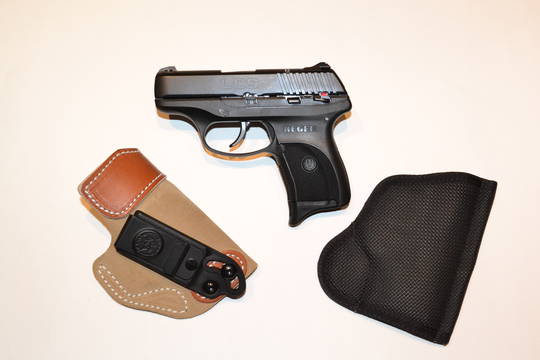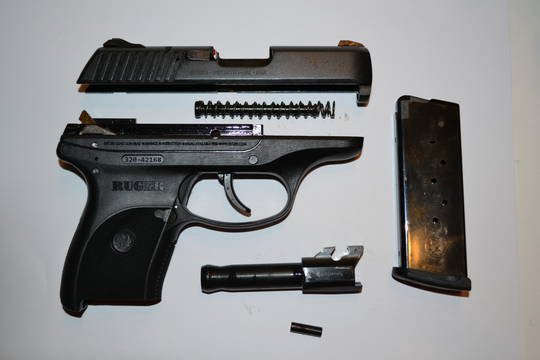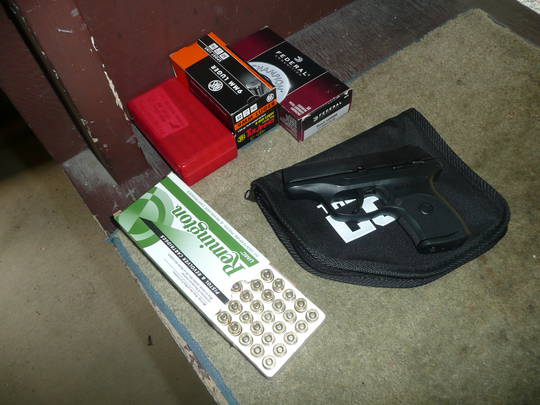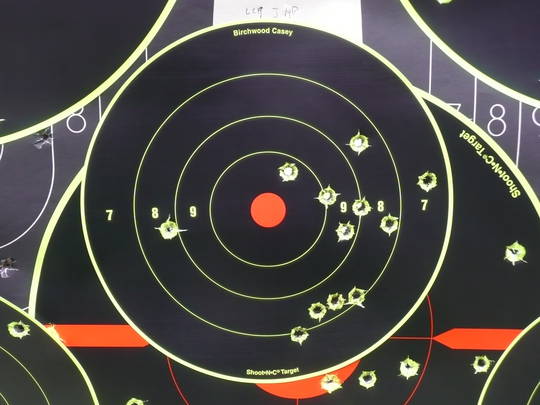NOTE: This product review was made possible by GunsForSale.com. To get up-to-date information on where to find cheap Ruger pistols for sale, please visit GunsForSale.com.
When I talked to the folks at Ruger at the 2011 NRA convention, the buzz was all about the Ruger SR1911. Ruger’s offering for the 100th anniversary of John Moses Browning’s iconic pistol was well-received, and they had triplicate models highlighted as the centerpiece of their pistol display. Talking to several of the Ruger staff, they were quite eager to reach out to gun writers both print and online to get the SR1911 into the hands of folks who wanted to test it out.
Well, except those of us in Massachusetts.
Not to be daunted, the request was submitted for an LC9 – Ruger’s micro-9mm is pretty significant in its own right. Not content to rest on the success of the LCP, Ruger offered up the LC9 as a “bigger brother” to the diminutive .380. The LC9 lands between the compact SR9 and the LCP for size, a thin, nearly pocketable 9mm to rival the Kel-Tec PF9, Kahr PM9, and SIG SAUER P290. Pistols in this market segment are small, light, and chambered in “major” calibers – 9mm, .357 Sig, and .40 S&W.
The LC9 comes with an impressive assortment of gear – zippered pouch, lock, finger rest magazine floor plate as well as flush, etc. (Picture 1). Since it’s so new to the scene, magazines are somewhat scarce and accessories are still in the development stage; however I was still able to procure both a pocket holster (DeSantis Nemesis) and a tuckable IWB holster (DeSantis Sof-Tuk) for the LC9 (Picture 2). Despite the protestations of some, the LC9 can indeed be carried in a front pocket, although not as easily as its smaller sibling the LCP.
The LC9 is both exactly what you’d expect from Ruger – solidly built, plain-jane looks, and superfluous safety features (LCI) – and also nothing like you’d expect. This is a subcompact 9mm bordering on pocket size – obviously geared for the concealed carry market, something that Ruger resisted for decades. Smith & Wesson made their smallest revolvers lighter and lighter; until the debut of the LCR, Ruger’s had been charitably weighted similar to anchors. It is obvious that the folks at Ruger have embraced the civilian concealed carry market, and everybody benefits.
First impressions. The LC9, despite its diminutive size, manages to fill one’s hand nicely. The magazine comes with both a flush floor plate and one with a finger rest which are quickly interchanged depending on one’s preference; for this review the flush plate was left in place. The gun has smooth, rounded lines for carry; simple and well-placed controls; and a trigger with minimal creep that smoothed out very nicely after a few hundred dry fires. The light weight allows it to both be carried with ease and also shot extensively – the empty weight of 17.1 ounces makes it only slightly heavier than an Airweight revolver. It’s heavy enough to absorb the recoil of 9mm but light enough to carry all day long.
Takedown is simple and achieved with minimal tools – simply empty the gun, push the takedown plate down, push lightly on the muzzle, and drive the takedown pin out (picture 3). One criticism I heard from a friend in the business is that with repeated firing/jostling of the gun, the takedown gate may become loose and allow the pin to fall out if nudged the wrong way – it doesn’t appear likely that the sequence of events needed for that to occur would happen in every day shooting and carrying, but it is something to be aware of. Having a spare takedown plate and pin in case they get worn wouldn’t be a terribly idea.
Shooting the LC9. The LC9 was taken to the range for a preliminary shakedown testing. Several different types and manufacturers of ammunition were acquired for testing – including jacketed hollowpoints as would be used for concealed carry (picture 5). The LC9 did not like RWS 124 grain FMJ ammunition, having three failures to fire out of the two magazines; however all other ammunition fed, fired, and ejected flawlessly. Most ammunition used was 115 grain FMJ; two magazines of Remington jacketed hollow point ammunition was added.
Accuracy was surprisingly good for a lightweight gun with a short sight radius (picture 6). Recoil was very manageable, allowing for rapid shots that stayed on target. Shooting the LC9 offhand at a distance 25 feet, rapid fire, all seven shots stayed well within the confines of a standard NRA B-34 silhouette target. Felt recoil was no worse than a standard S&W J-frame revolver firing light .38 Special rounds. The LC9 trigger, while on the heavier side, was consistent from take-up to release and is similar to a double action revolver.
Conclusion: The LC9 is a solid hit for Ruger. It’s priced very competitively in the field of subcompact 9mm handguns, with competitors either significantly higher or statistically equal. The fit and finish is what one expects from Ruger – solid yet utilitarian. Further testing remains to be done with regards to how it carries as well as the long term reliability – less than 75 rounds were run through this model for the testing, which barely covers the break-in period. It will also need more time in the holster to see if the small size and light weight translate into “carry lots”.
[ We are proud to continue to have Jay G of the MArooned blog as a guest writer. ]
 Your Privacy Choices
Your Privacy Choices






